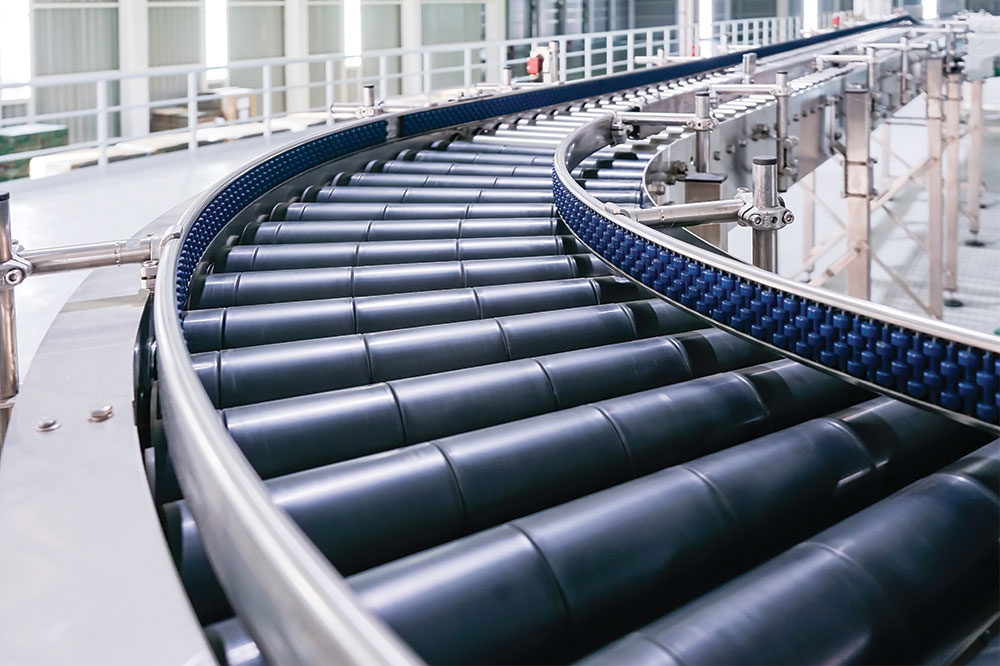Comprehensive Guide to Choosing the Optimal Material Handling Conveyor for Your Industry
Choosing the right material handling conveyor is crucial for operational efficiency and safety. This detailed guide covers key factors such as operational needs, environmental conditions, costs, and vendor reliability. Designed for industries like manufacturing and warehousing, it helps you make informed decisions to optimize your material handling systems for long-term success. With thorough insights and practical tips, this article ensures you select a conveyor that enhances productivity and reduces operational costs.

Key Factors to Consider When Selecting a Material Handling Conveyor
In the realm of modern manufacturing and automation, material handling conveyors have become indispensable tools that streamline operations, enhance safety, and boost overall efficiency. These systems are designed to transport materials seamlessly within factories, warehouses, and distribution centers. Selecting the right conveyor system is a critical decision that can impact productivity, operational costs, and safety standards. With a wide array of options available, understanding the essential factors influencing your choice is vital. This comprehensive guide aims to provide detailed insights into how to choose the most suitable material handling conveyor tailored to your specific industry needs.
Understanding Your Operational Requirements
The first step in selecting an appropriate conveyor involves a thorough assessment of your operational needs. Determine the primary purpose of the conveyor system—whether it will be used for straightforward transportation tasks or for more complex, time-sensitive processes. For example, in assembly lines where precise positioning and rapid transfers are crucial, you’ll need a conveyor that offers high accuracy and speed. Conversely, for bulk material movement within warehouses, a more robust and high-capacity conveyor might be appropriate.
Categories of Conveyors: Feeding vs. Conveying
Understanding conveyor classifications helps in making informed decisions. Conveying systems are generally divided into two main categories: feeding and conveying. Conveyors dedicated to conveying are primarily used to transport items from one point to another, often over long distances or through complex routes. Feeding conveyors, on the other hand, involve precise, controlled transfers of items—often in situations where timing and accuracy are paramount, such as in packaging or assembly operations. Recognizing these differences helps in selecting the correct type of conveyor for your facility.
Environmental Conditions Impacting Conveyor Choice
One of the most significant factors influencing conveyor selection is the environmental conditions of your facility. Several environmental aspects must be considered, including:
Temperature fluctuations: Some conveyor components are sensitive to extreme heat or cold, which can affect their durability and performance.
Corrosive vapors: Chemical fumes or corrosive environments require materials resistant to degradation.
Presence of vacuum or pressure zones: Certain plant areas may have varying atmospheric conditions that influence material handling strategies.
High humidity levels: Moist environments can lead to rust or impede electrical components of conveyors.
Vibration impacts: Facilities with high vibration levels may necessitate specific conveyor mounts or designs to prevent misalignment or damage.
Adapting conveyor materials and safety features to these environmental factors ensures reliable operation and longevity of the system.
Cost Analysis and Budgeting
Budget considerations are integral to selecting the appropriate conveyor system. While some conveyor types may involve higher initial investments, they often provide benefits such as lower operating costs, improved energy efficiency, and reduced maintenance requirements over time. It’s essential to balance upfront costs with long-term savings. Engage with multiple suppliers to compare pricing, warranty services, and included features. A prudent approach involves not only assessing acquisition costs but also considering lifecycle expenses such as routine maintenance, parts replacement, and potential downtime costs. Investing in a reliable, energy-efficient conveyor can ultimately lead to significant savings and increased throughput.
Evaluating Vendor Reliability and Service Support
When upgrading or deploying a new conveyor system, evaluating vendor reliability is crucial. Review the vendor’s service record, including client references, maintenance support, and response times. Reliable vendors provide comprehensive after-sales support, ensuring minimal operational disruptions. Past performance issues should be scrutinized, and vendors should be capable of offering practical solutions to potential problems. Before making a purchase, discuss warranty coverage, spare parts availability, and technical assistance to confirm the vendor’s capacity to support your operational needs.
In conclusion, selecting the right material handling conveyor requires a strategic approach rooted in understanding your operational demands, environmental conditions, financial constraints, and vendor reliability. Proper planning and thorough research are essential to choosing a conveyor system that maximizes productivity, ensures safety, and offers the best return on investment for your industry. Whether you’re in manufacturing, warehousing, or distribution, this guide provides the necessary insights to make an informed decision and optimize your material handling processes.





